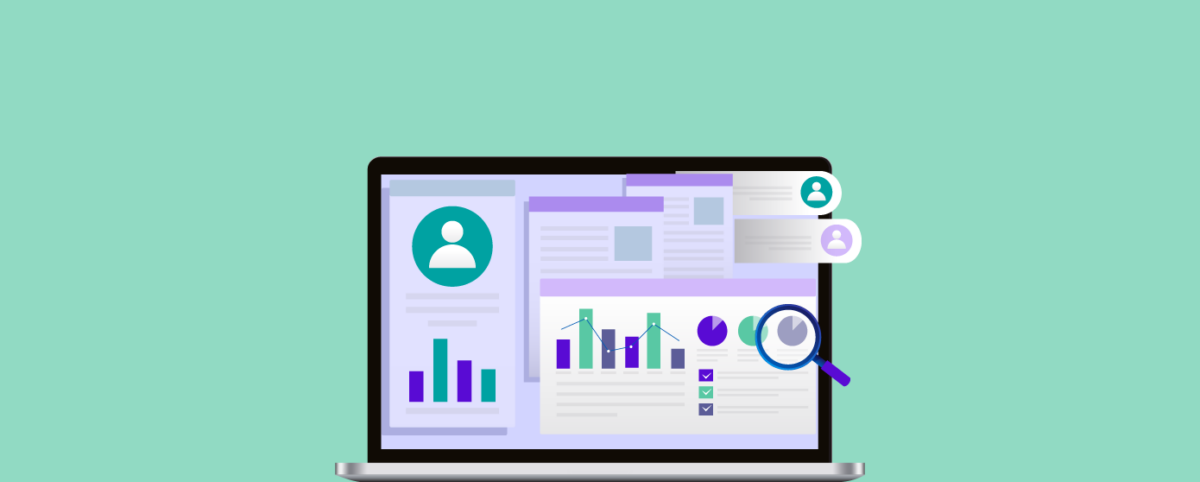The Blueprint: How MSSPs Can Build a Profitable Pentest-as-a-Service (PtaaS) Offering
The latest 2025 Verizon Data Breach Investigations Report (DBIR) reveals a striking shift: exploitation of vulnerabilities has surged to become the initial access vector in approximately 20% of breaches, a 34% increase over the prior year. In an environment where cyber threats evolve faster than patch cycles, enterprises no longer view penetration testing as a checkbox exercise. Traditional point‑in‑time testing has given way to the need for continuous, measurable, and business‑aligned security validation.
For Managed Security Service Providers (MSSPs), this shift is more than a technical challenge; it is a business opportunity. The ability to transform conventional testing engagements into a Pentest‑as‑a‑Service (PTaaS)offering can redefine how MSSPs generate revenue, retain clients, and scale operations.
Done right, PTaaS allows MSSPs to move from one‑time project delivery to recurring, outcome‑driven partnerships that directly link to client trust and compliance needs.
What Are the Core Components of a Profitable PTaaS Business Model?
Building a successful PTaaS offering is not just about buying a few tools. It requires a thoughtful approach to service design, technology integration, and business strategy.
1. Defining Your Service Tiers and Pricing Models
The foundation of a profitable PTaaS offering is a recurring revenue model. This provides predictable income for the MSSP and predictable costs for the client.
- Subscription-Based Tiers: Create packages (e.g., Basic, Pro, Enterprise) based on the number of assets, testing frequency, and depth of testing.
- Usage-Based Credits: For clients with fluctuating needs, a credit-based system can work. Clients purchase credits that can be redeemed for specific tests (e.g., API test, network scan, web app pentest) as needed.
2. Building the Right Technology Stack
Your technology stack is the engine of your PTaaS service. It must enable both automation for scale and deep manual analysis for accuracy.
- Automated Scanners: Leverage Dynamic Application Security Testing (DAST) tools to provide the first layer of continuous vulnerability detection. Automation allows MSSPs to scale your testing across multiple clients efficiently, ensuring frequent assessments without adding proportional human overhead.
- Manual Pen Testing : While automation provides speed and scale, it cannot replace the insight of human-led analysis. This is where manual penetration testing becomes critical. Ethical hackers perform targeted tests to uncover complex business logic vulnerabilities, multi-step exploit chains, and context-driven vulnerabilities that automated tools simply overlook.
- By enforcing manual pen testing as part of your service, you ensure that clients receive actionable, context-aware insights rather than raw scan data. This human validation adds a crucial layer of credibility, supporting compliance requirements and strengthening your MSSP’s reputation as a trusted security partner rather than a mere tool operator.
- In the PTaaS model, automation and manual testing are not competing forces, they are complementary layers.
- The Central PTaaS Platform: This is the most critical component. A robust PTaaS platform acts as the central hub for clients and your security team. It should provide a unified dashboard for viewing vulnerabilities, tracking remediation progress, generating reports, and communicating with testers.
Check in detail how a centralized dashboard enhances visibility and efficiency for your clients
3. Crafting Ironclad Service Level Agreements (SLAs)
A clear Service Level Agreement (SLA) is essential for managing client expectations and defining the scope of your service. A strong PTaaS SLA should detail:
- Asset Scope: Clearly define which applications, APIs, and infrastructure are covered.
- Testing Frequency: Specify the cadence of both automated scans and manual tests.
- Vulnerability Triage Time: Define how quickly new findings will be validated and reported.
- Reporting and Deliverables: Outline the format and frequency of reports (e.g., real-time dashboard access, monthly summary reports, audit-ready reports for PCI DSS or SOC 2).
- Remediation Support: Clarify the level of support your team will provide to help client developers fix identified vulnerabilities.
Understand the KPIs and SLAs for vulnerability management program.
PTaaS vs. Traditional Pentesting: A Clear Comparison for MSSPs
| Feature | Traditional Penetration Testing | Pentest-as-a-Service (PTaaS) |
|---|---|---|
| Model | One-time project | Subscription-based, continuous service |
| Frequency | Point-in-time (e.g., annual) | Continuous or on-demand |
| Cost Structure | High upfront capital expenditure (CapEx) | Predictable operational expenditure (OpEx) |
| Remediation | Report delivered at the end; re-test is a separate project | Real-time findings, collaborative remediation, and included re-scans |
| Scalability | Difficult to scale; talent-dependent | Highly scalable through automation and a platform-based approach |
| Client Value | A snapshot of security posture | Continuous visibility and improvement of client security posture |
| Revenue Model | Unpredictable, project-based | Stable, recurring revenue model |
How Indusface WAS MSSP Edition Supports MSSPs
For MSSPs looking to build or scale a PTaaS offering without the overhead of developing a platform from scratch, Indusface WAS MSSP Edition provides a complete, ready-to-use solution. The platform combines continuous DAST scanning with enforced manual penetration testing, ensuring both speed and depth in vulnerability assessments.
Here is how it accelerates your go-to-market:
- Integrated DAST and Manual Pentesting: Combines a comprehensive automated scanner with unlimited manual pentesting to ensure deep coverage and accuracy.
- Zero False Positive Guarantee: Every vulnerability discovered by the scanner is manually verified by Indusface security experts. This saves your team and your clients countless hours chasing non-existent issues and builds immense trust.
- Real-Time Client Visibility: Clients can access up-to-date dashboards reflecting their security posture and mitigation activities. Enhances transparency, helping MSSPs demonstrate value and maintain SLA compliance.
- Streamlined Workflows and Time Savings: Automates consolidation and formatting of reports across multiple clients. Saves 2–3 days per engagement that would otherwise be spent manually preparing reports. Allows MSSPs to focus on strategic security operations rather than administrative tasks.
- Enhanced Reporting and Decision Support: Generates comprehensive, customizable, and actionable client reports. Combines insights from multiple scans and tools to guide remediation and optimize security operations. Supports data-driven decisions, improving client protection and operational efficiency.
- Whitelabel pentesting: Finally, Indusface WAS MSSP Edition enables white-labeled, audit-ready reporting, allowing MSSPs to deliver consistent, professional outputs without repetitive manual work.
By integrating automation, manual pen testing, false positive management, and centralized dashboards, the platform empowers MSSPs to deliver scalable, efficient, and high-value PTaaS services that strengthen client trust and drive business growth.
How to Market and Sell Your New PTaaS Offering
Once your offering is built, you need a solid go-to-market plan.
- Upsell Existing Clients: Your current customer base is your most valuable asset.Start by offering PtaaS to clients you already serve, highlighting how it complements their existing security programs and provides continuous, measurable protection.
- Bundle for Higher Value: Package your PTaaS with other offerings like managed WAF, threat intelligence, or vCISO services to create a comprehensive security solution.
- Highlight Compliance Drivers: Market the service as a key enabler for meeting compliance standards like PCI DSS, HIPAA, and ISO 27001, which often mandate regular penetration testing.
- Offering PTaaS helps you become an indispensable security partner in your clients’ digital transformation journey.
Ready to build a scalable and profitable PTaaS offering? Explore how Indusface WAS MSSP Edition provides the platform and expertise to accelerate your success. Request a Demo Today.
Stay tuned for more relevant and interesting security articles. Follow Indusface on Facebook, Twitter, and LinkedIn.
Frequently Asked Questions (FAQs)
Pentest-as-a-Service (PtaaS) is a cybersecurity service model that provides continuous or on-demand penetration testing through a platform-based subscription. It combines the scalability of automated scanning tools with the depth and intelligence of manual, human-led testing to offer a more agile and comprehensive alternative to traditional, point-in-time pentests.
The key difference lies in the delivery model and frequency. Traditional pentesting is a one-off project performed infrequently (e.g., annually) with a high upfront cost. PTaaS is a continuous service on a subscription model, providing real-time vulnerability data, collaborative remediation, and ongoing security assurance.
Yes, offering PTaaS can be highly profitable for an MSSP. It shifts revenue from unpredictable, one-time projects to a stable, recurring subscription model. This improves revenue predictability, increases customer lifetime value, and allows MSSPs to scale their security services more efficiently through automation and platform-based delivery.
A robust PTaaS offering requires a technology stack that includes automated vulnerability scanners (DAST,), manual pen testing and a centralized management platform. This platform should integrate findings from these tools and provide a dashboard for reporting, collaboration, and remediation tracking.
PTaaS pricing is typically subscription-based, often in tiers. Pricing can be determined by factors such as the number of web applications or APIs under test, the frequency and depth of manual testing required, the scope of the attack surface, and the level of remediation support and SLA guarantees included in the service.
For clients, the primary benefits include a significantly improved security posture, faster detection and remediation of vulnerabilities, and reduced risk of a breach. It also helps them meet compliance requirements, provides predictable security spending, and integrates security seamlessly into their DevOps lifecycle.

 October 31, 2025
October 31, 2025





